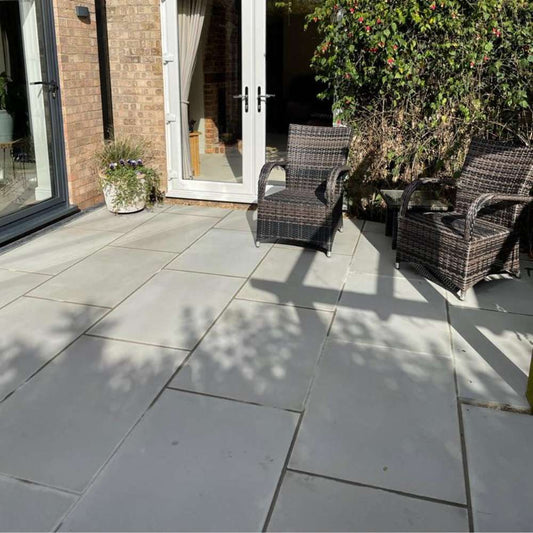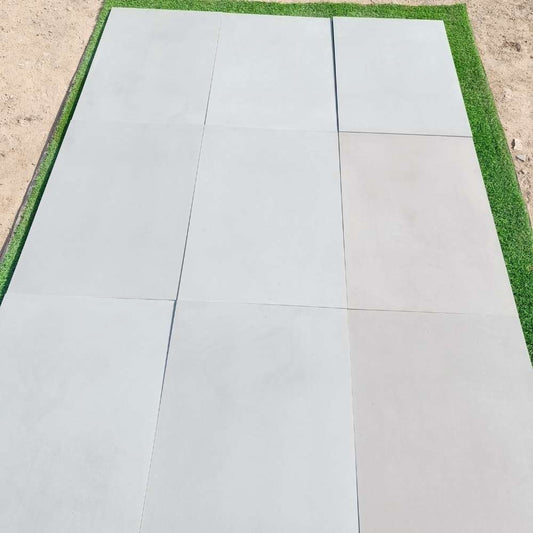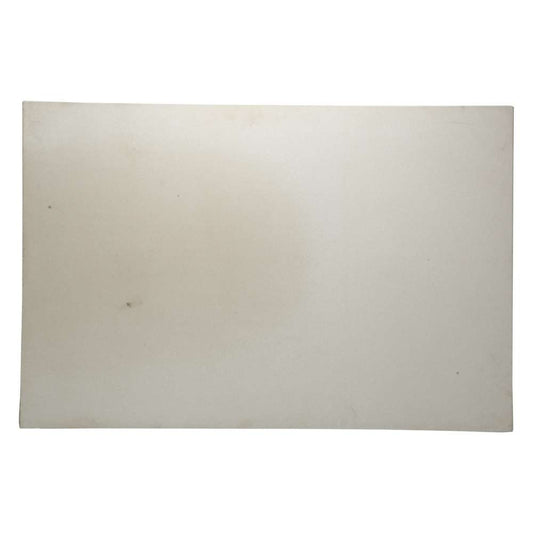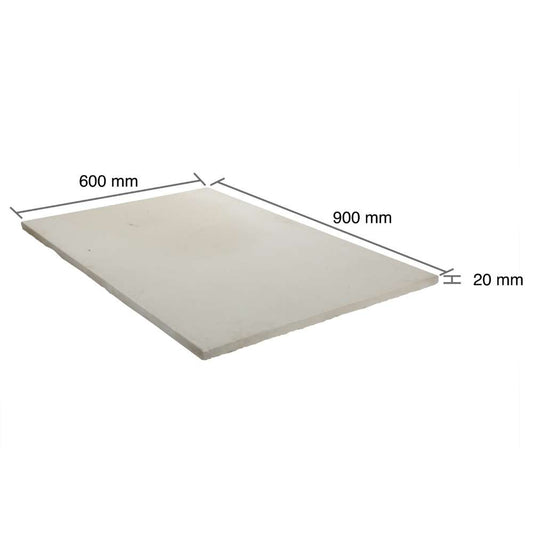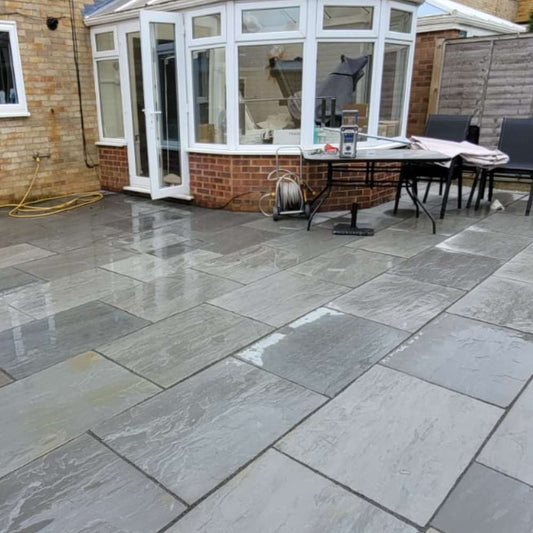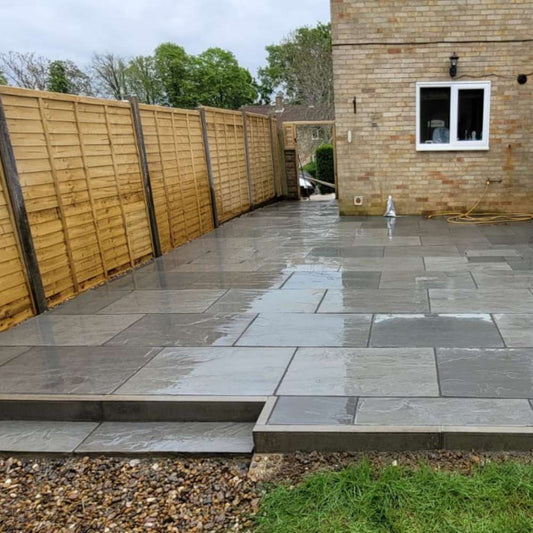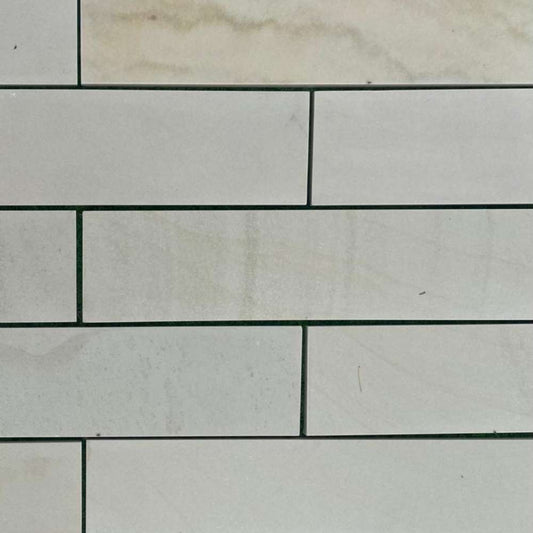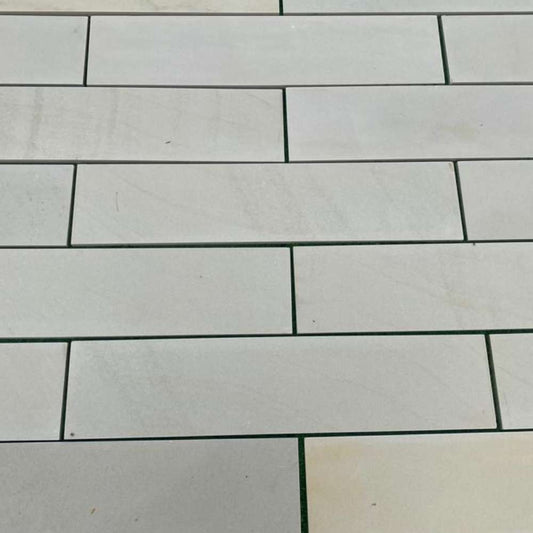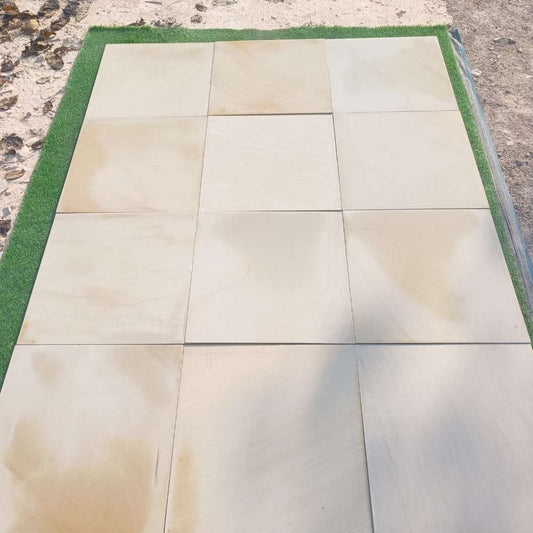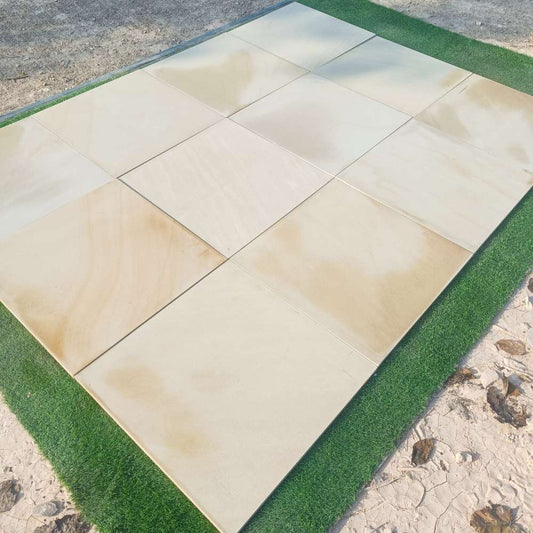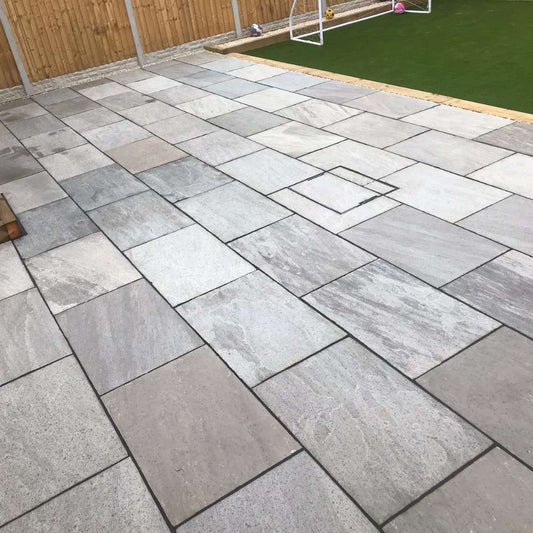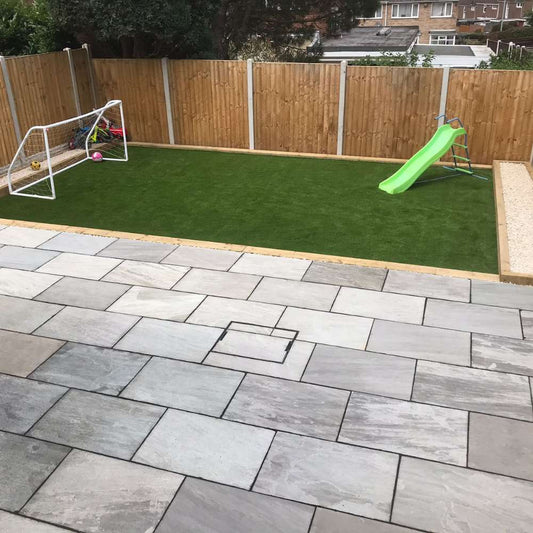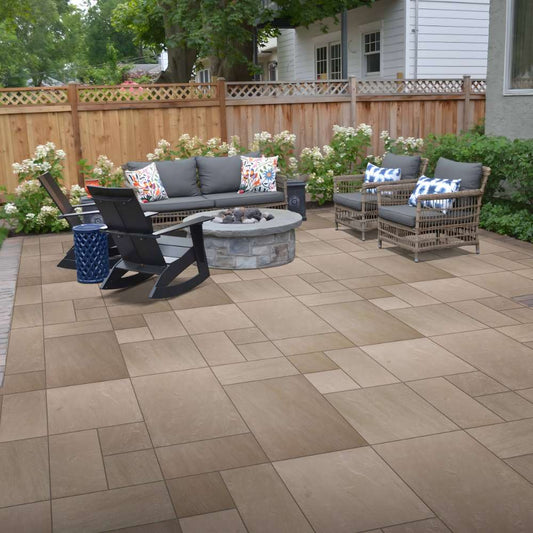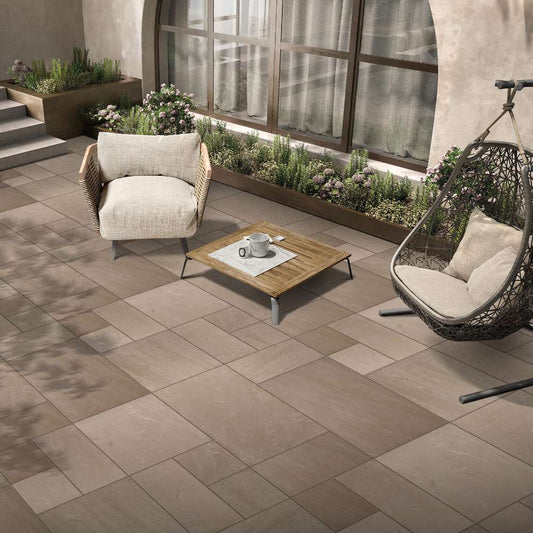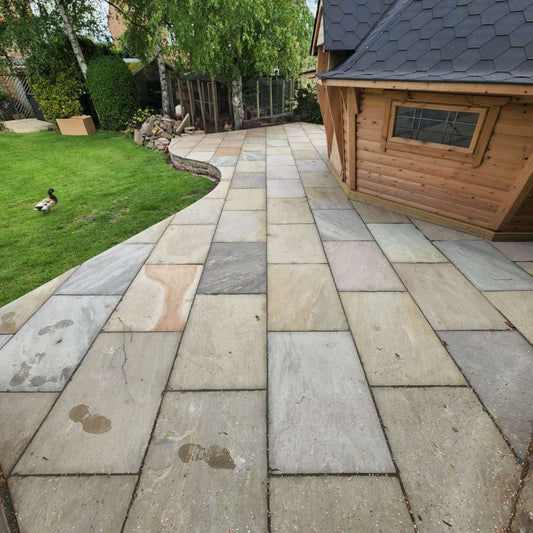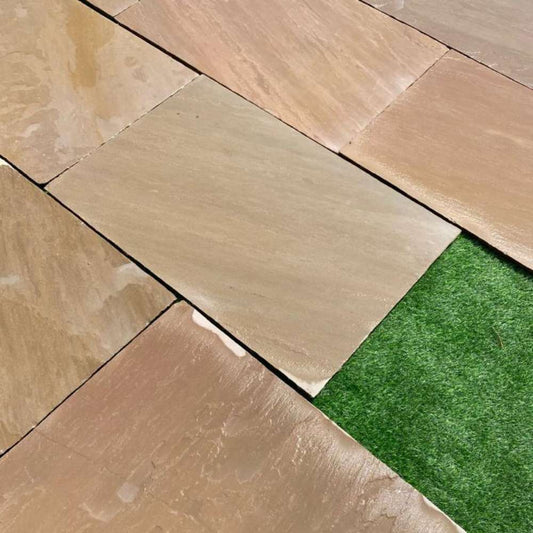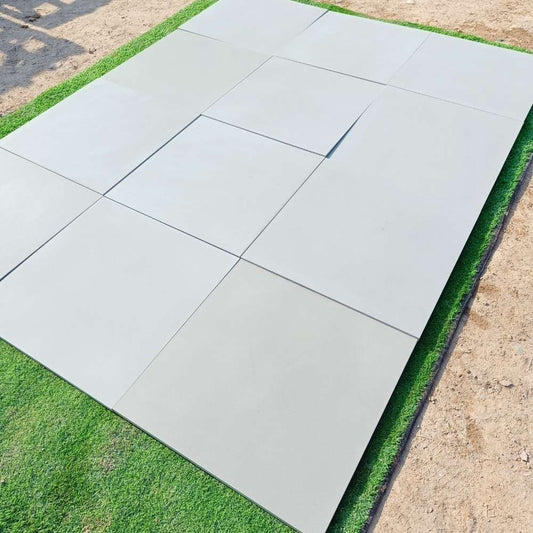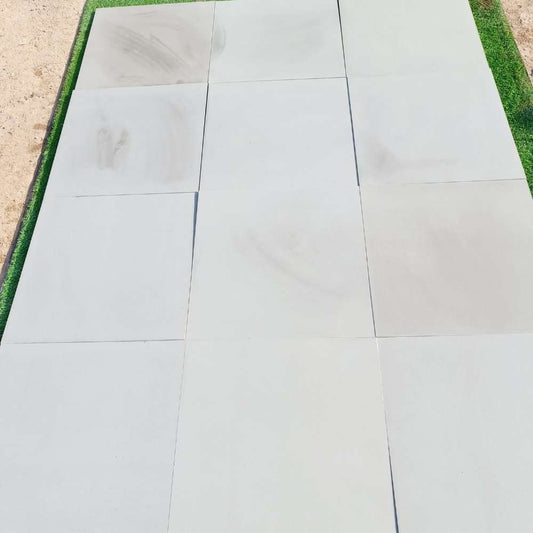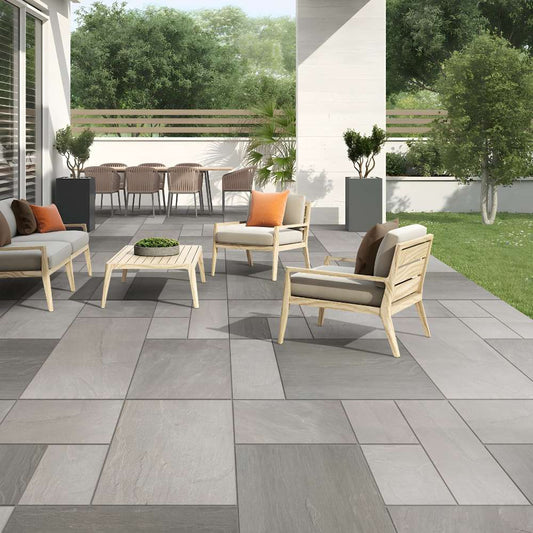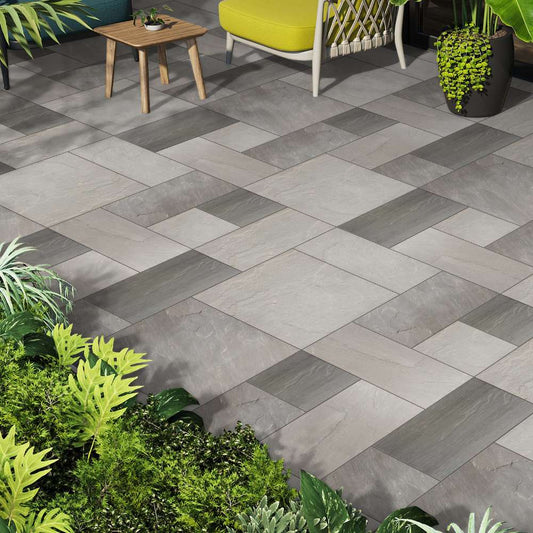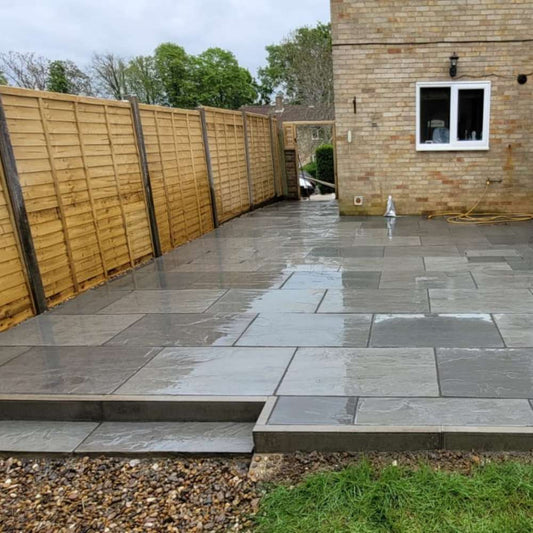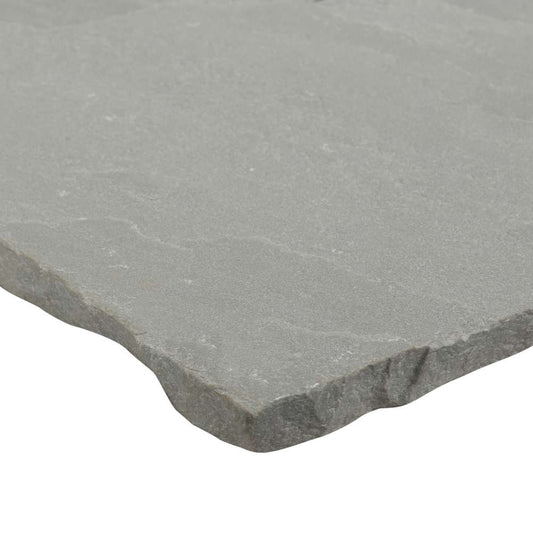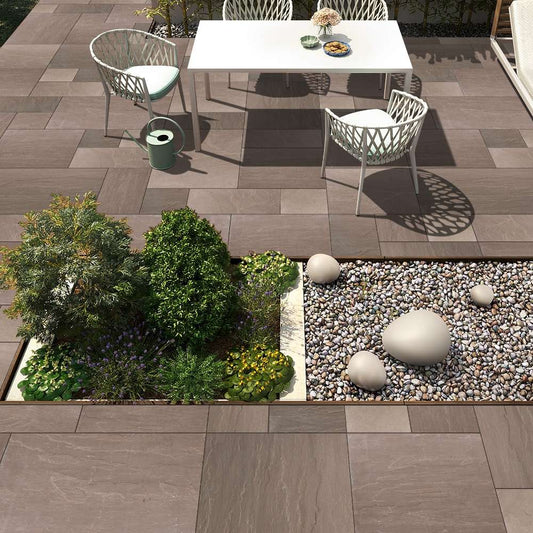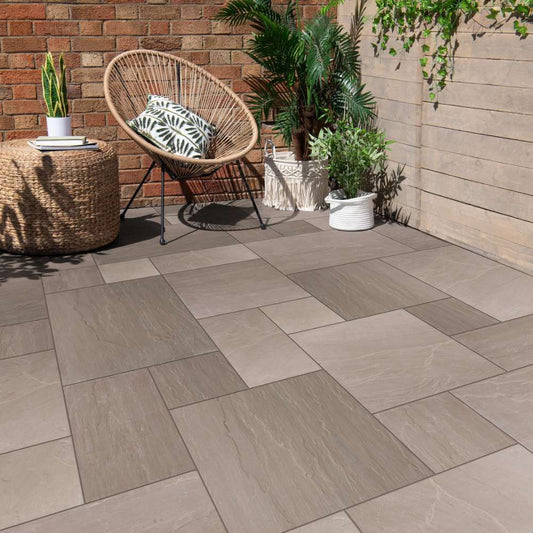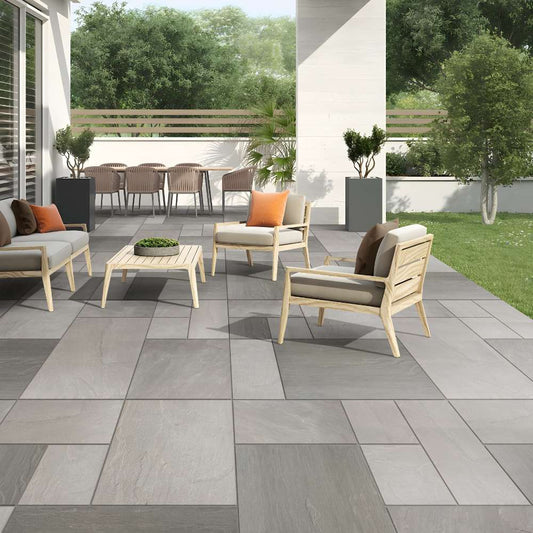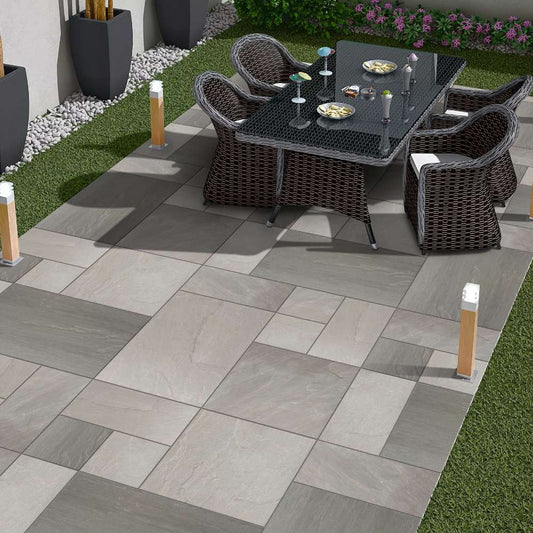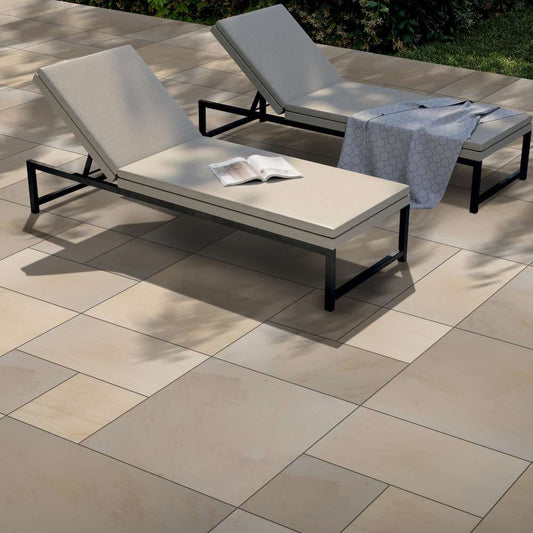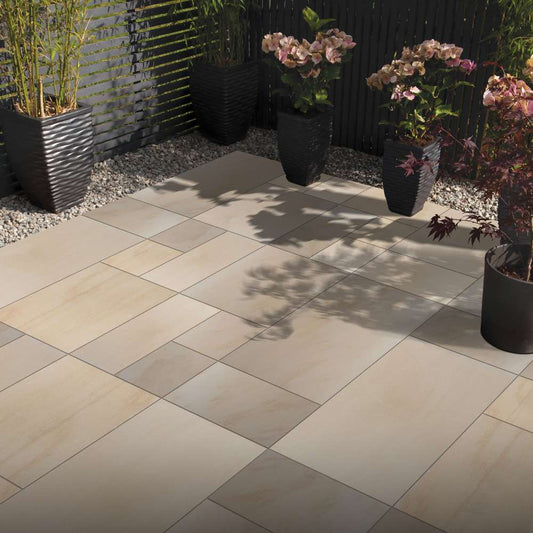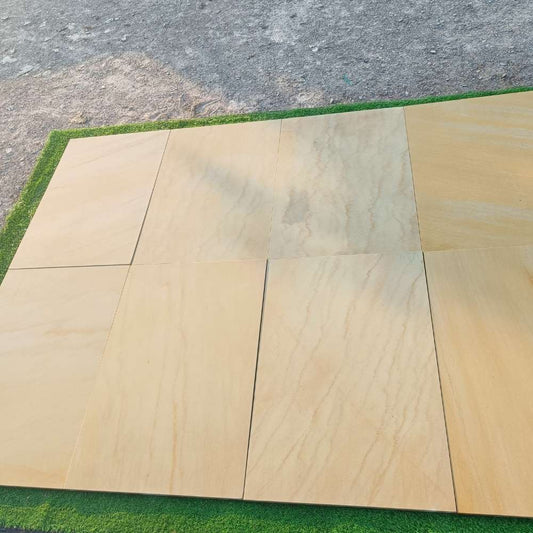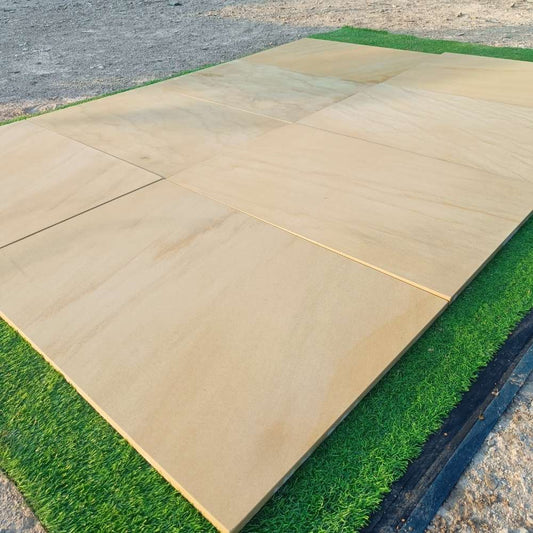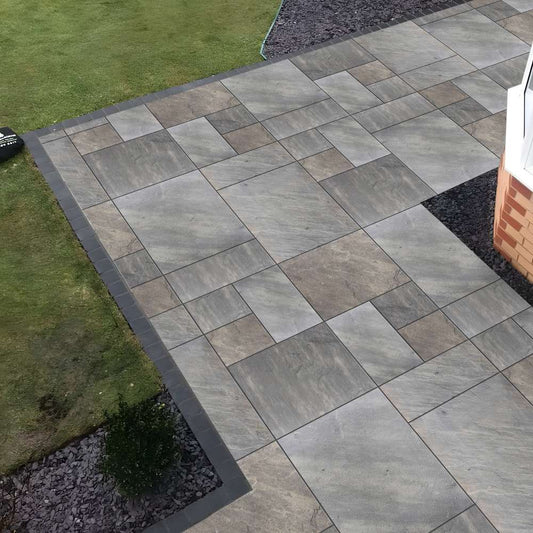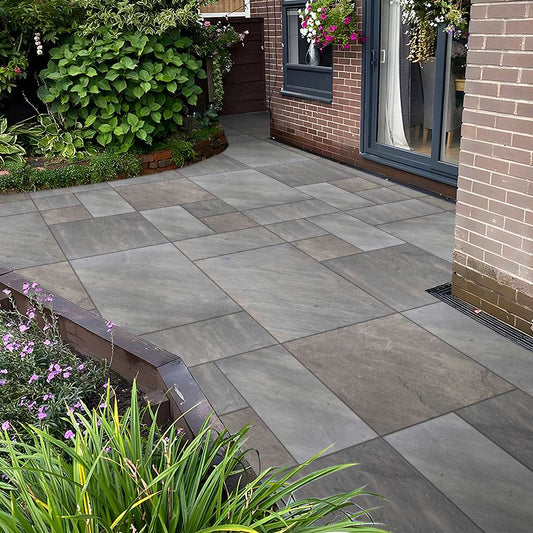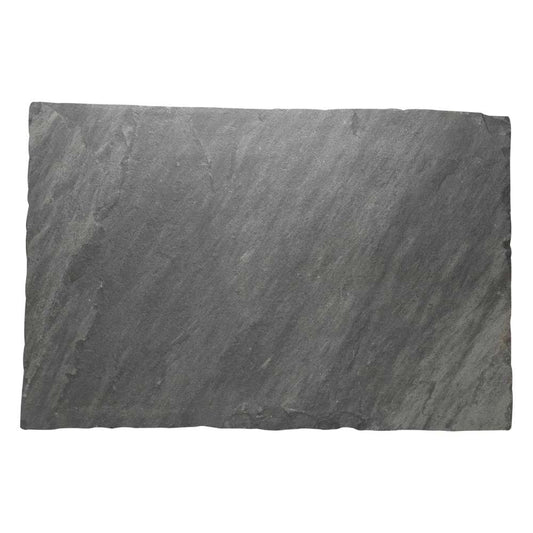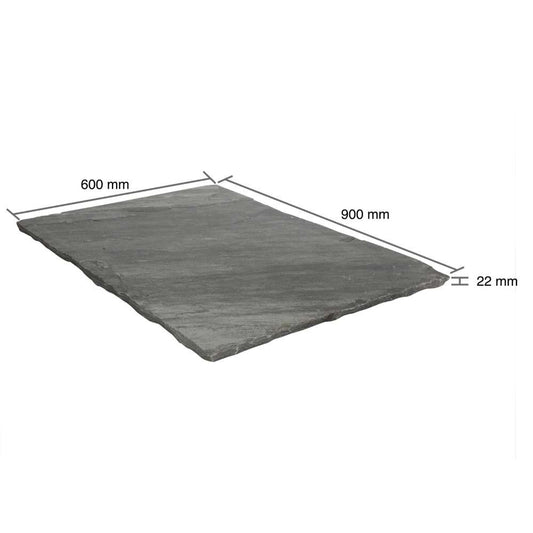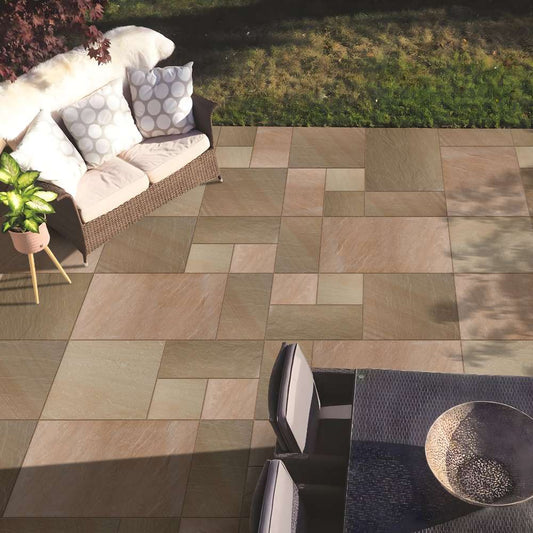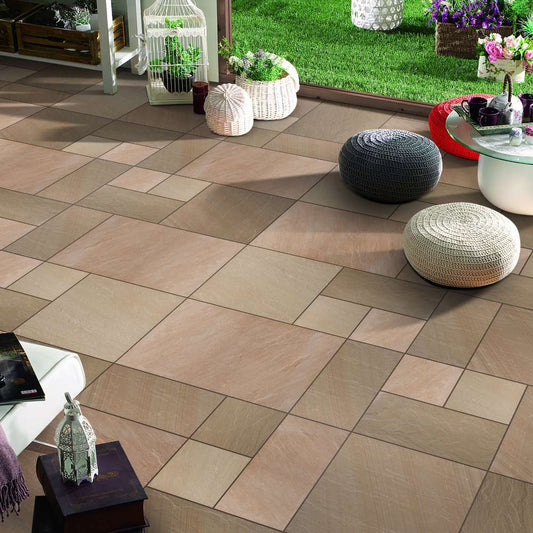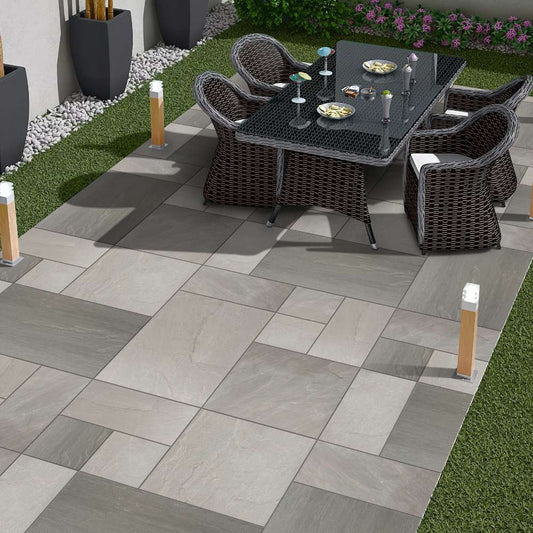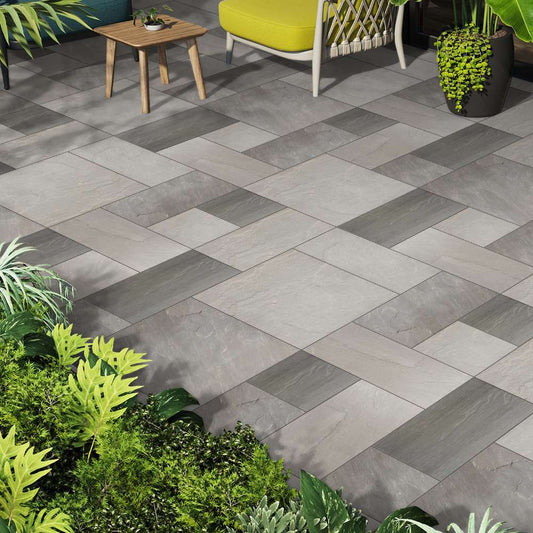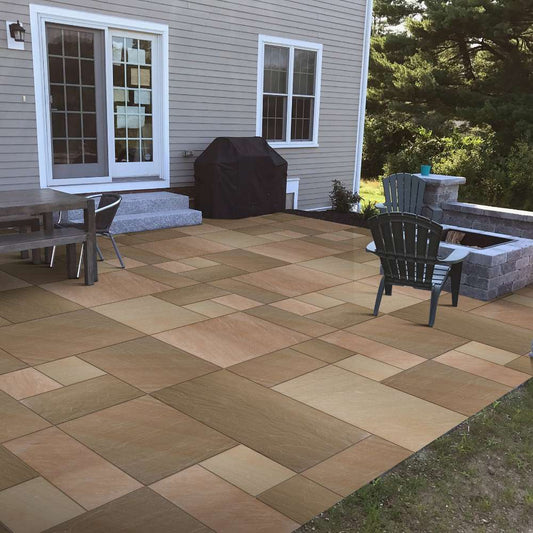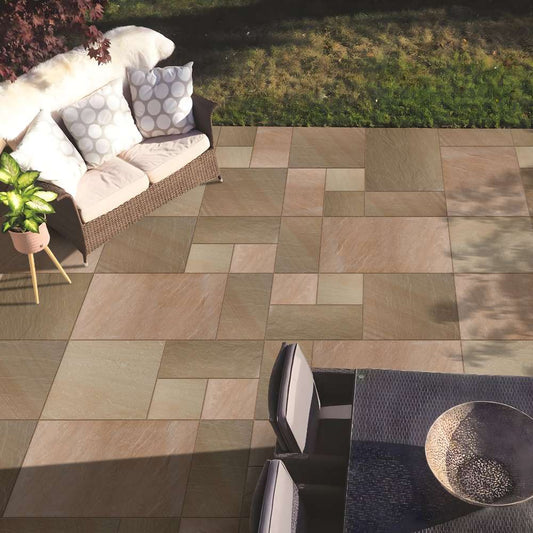-
Kandla Grey Smooth Sandstone 600x900 Sawn Edged Paving SlabsUpgrade your outdoor space with Kandla Grey Sandstone Smooth Paving 600x900, a perfect combo of style and toughness. Made from top-notch Kandla Grey sandstone, these smooth slabs boast a super sleek finish, making your paved areas look classy. They're not just pretty; they're tough...From £50.89 £34/m2
-
Beige Smooth Sandstone 600x900 Sawn Edged Paving SlabsBeige Sandstone Smooth Paving is a practical choice for enhancing outdoor spaces. Crafted with precision, these Beige sawn and honed paving slabs showcase a smooth finish, adding sophistication to gardens, patios, and walkways. The Beige Smooth Paving features a 600X1200 size, combining functionality with...From £41.42 £27.50/m2
-
Kandla Grey Riven Sandstone 600x900 Paving SlabsIntroducing Kandla Grey Sandstone, a popular choice in the UK, perfect for extreme weather. This durable natural finish combines style with strength for outdoor areas. With its unique texture and muted grey tones, it's great for pathways and patios, lasting for years. Each slab...From £38.38 £25.50/m2
-
Beige Smooth Sandstone 200x900 Sawn Edged Plank PavingWith our Beige Smooth Sandstone 200x900 Sawn Edged Plank Paving, you can transform your outside area. Every plank has a charm that is made to last. The sawn edges and smooth surface give it a sleek, contemporary appearance that complements any external design. Its...From £45.74 £30.50/m2
-
Fossil Mint Smooth Sandstone 600x600 Sawn Edged Paving SlabsFossil Mint Sandstone Smooth Paving stands out as a pragmatic choice for outdoor spaces. With fossilised surface detail, these Indian stones in fossil mint hues blend with beige and natural shades of brown. This paving stone, featuring a smooth finish, effortlessly enhances the visual...From £38.79 £26/m2
-
Kandla Grey Riven Sandstone 600x900 Sawn Edged Paving SlabsIntroducing Kandla Grey Sandstone, a popular choice in the UK, perfect for extreme weather. This durable natural finish combines style with strength for outdoor areas. With its unique texture and muted grey tones, it's great for pathways and patios, lasting for years. Each slab...From £38.46 £25.50/m2
-
Raj Green Riven Sandstone Mixed Patio Paving SlabsRaj Green Sandstone Riven Paving Mix Patio Pack is an ideal choice for enhancing your outdoor spaces. Crafted from high-quality Raj Green natural finish slabs, this patio pack offers a harmonious blend of durability and aesthetic appeal. The varied hues of Raj Green create...From £37.57 £25/m2
-
Raj Green Riven Sandstone 600x900 Paving SlabsRaj Green Sandstone Riven Paving offers a lasting solution for outdoor areas. Constructed from premium-quality Raj Green sandstone, this paving choice features a natural riven finish, imparting character and texture to any outdoor setting. The inherent, organic texture enhances the overall feel of outdoor...From £38.38 £25.50/m2
-
Kandla Grey Smooth Sandstone 600x600 Sawn Edged Paving SlabsBring timeless style and long-lasting beauty to your patio with Kandla Grey Sandstone Smooth Paving! These smooth, grey slabs are easy to maintain and perfect for the unpredictable British weather. They're made from high-quality natural stone and come in a neat 600x900 size, making...From £50.91 £34/m2
-
Kandla Grey Riven Sandstone Mixed Patio Paving Slabs 18mmUpgrade your patio with beautiful, easy-to-maintain Kandla Grey Sandstone Riven Mix Patio Pack! These sturdy patio slabs mix style and strength flawlessly, creating a beautiful outdoor escape. With classic charm, Kandla Grey paving suits any design style, especially for patios, where it adds sophistication...From £33.80 £22.50/m2
-
Kandla Grey Riven Sandstone 600x900 Paving Slabs 18mmKandla Grey Sandstone is a popular choice for patios in the UK because it is both beautiful and durable. It is a natural stone with a classic grey color and a distinctive riven texture. It is also very tough and can withstand the UK's...From £34.55 £23/m2
-
Autumn Brown Riven Sandstone Mixed Patio Paving Slabs 18mmAutumn Brown Sandstone Riven Paving Mix Patio Pack is a practical and stylish solution for outdoor spaces. The mixed patio pack offers versatility in design, allowing you to create a charming and unique outdoor area. Ideal for patios and garden spaces, the Autumn Brown...From £32.83 £22/m2
-
Kandla Grey Riven Sandstone Mixed Patio Sawn Edged Paving SlabsElevate your patio with beautiful, easy-to-maintain Kandla Grey Sandstone Riven Mix Patio Pack! These sturdy patio slabs mix style and strength flawlessly, creating a beautiful outdoor escape. With classic charm, Kandla Grey paving suits any design style, especially for patios, where it adds sophistication...From £37.25 £25/m2
-
Fossil Mint Smooth Sandstone Mixed Patio Sawn Edged Paving SlabsFossil Mint Sandstone Smooth Paving Mix Patio Pack is a versatile solution tailored for outdoor spaces. This thoughtfully curated mix of Fossil Mint sawn and honed paving slabs offers a seamless blend of functionality and aesthetic appeal for patios and outdoor areas. With fossilised...From £36.20 £23.50/m2
-
Fossil Mint Smooth Sandstone 600x900 Sawn Edged Paving SlabsFossil Mint Sandstone Smooth Paving turns out to be a practical and durable choice for outdoor spaces. With its smooth finish, this paving stone effortlessly enhances gardens, patios, and walkways. Specifically designed for outdoor use, the Fossil Mint Smooth Paving seamlessly integrates with various...From £39.05 £26/m2
-
Sagar Black Riven Sandstone Mixed Patio Paving SlabsTransform your outdoor living area with the timeless sophistication of the Sagar Black Sandstone Riven Mix Patio Pack. Meticulously crafted, these sturdy patio slabs seamlessly combine aesthetic appeal and functionality, providing a striking foundation for your outdoor sanctuary. Perfect for patios, the Sagar Black...From £ 52.38 £ 35.00/m2
-
Sagar Black Riven Sandstone 600x900 Paving SlabsIntroducing the versatile Sagar Black Sandstone, featuring a natural finish that seamlessly harmonizes aesthetics with durability for outdoor spaces. Well-suited for paving, Sagar Black showcases a distinctive riven texture, imparting character to your surroundings. This resilient sandstone, renowned for its subdued grey tones, is...From £ 55.68 £37.00/m2
-
Rippon Buff Riven Sandstone Mixed Patio Paving Slabs 18mmRippon Buff Sandstone Riven Paving Mix Patio Pack presents a practical and stylish solution for outdoor settings. Featuring a natural finish, these patio slabs seamlessly blend durability with a timeless aesthetic. The assorted patio pack provides design flexibility, allowing you to craft a charming...From £33.80 £22.50/m2
-
Kandla Grey Riven Sandstone Mixed Patio Paving SlabsWant a beautiful, durable patio pack perfect for the UK's unpredictable weather? Look no further than Kandla Grey Sandstone Riven Mix Patio Pack! These durable patio slabs blend style and strength effortlessly, creating a stunning foundation for your outdoor retreat. Each slab is meticulously...From £37.57 £25/m2
-
Rippon Buff Riven Sandstone Mixed Patio Paving SlabsRippon Buff Indian Sandstone is a popular color in the UK because it looks like the stone you find in lots of places here. It's tough and doesn't need much looking after, making it great for rough weather. This type of stone from Stonemart...From £37.57 £25/m2
- Choosing a selection results in a full page refresh.
 Account
Account

